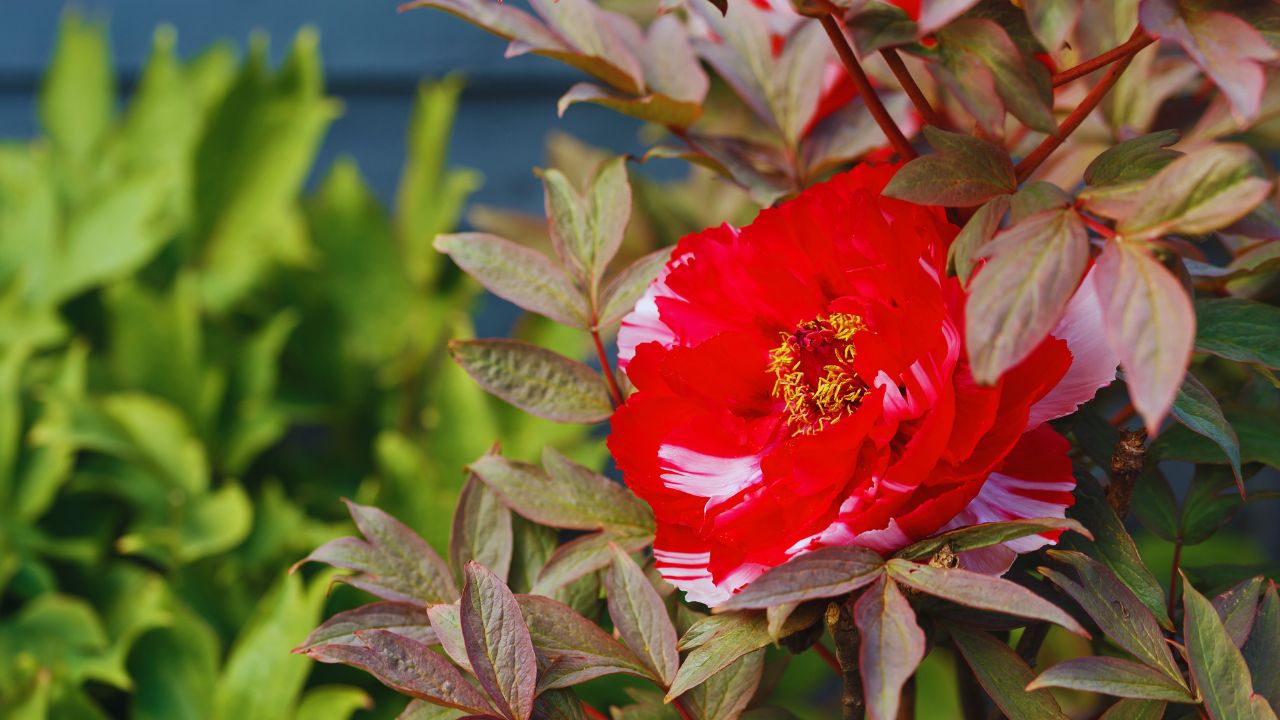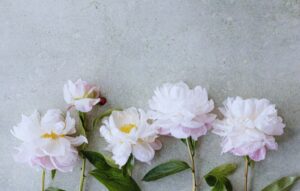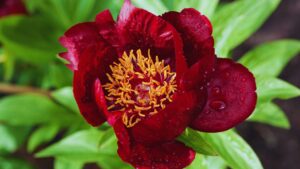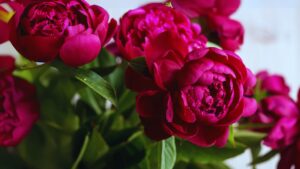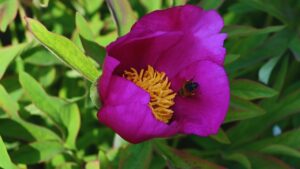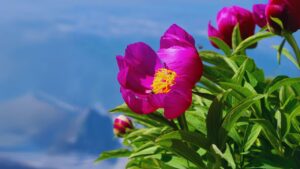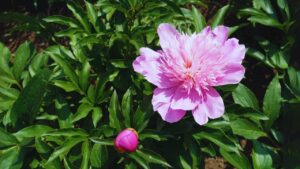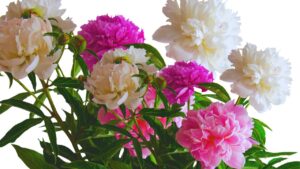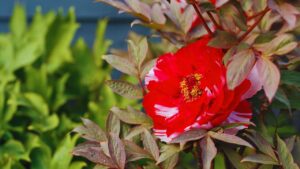Introduction
The botanical species Paeonia jishanensis exists as a special and elusive peony that captivates with its distinctive appearance as well as its delicate features. The Chinese origin species attracts botanists, gardeners and flower enthusiasts because of its exceptional looks and flexible nature.
The Paeoniaceae family includes Paeonia jishanensis which gains importance because of its historical importance in addition to medicinal applications and its ornamental qualities. This paper investigates all essential attributes of Paeonia jishanensis starting from its origins through its key characteristics and cultivation requirements and its substance applications.
Origin and History of Paeonia jishanensis
Native Habitat
Paeonia jishanensis originates from China, especially in the provinces of Shanxi, Henan, and Shaanxi. These regions provide a genuinely ideal surroundings with their mountainous landscapes, cool temperatures, and properly-worn-out soils. The species thrives in these natural situations, allowing it to develop robustly. Botanists classified Paeonia jishanensis inside the twentieth century, recognizing its notable horticultural and botanical significance amongst peonies.
The plant’s version to high-altitude situations gives it a bonus in surviving numerous environmental conditions. Its capacity to undergo cold winters and warm summers contributes to its lengthy lifespan and resilience. The species’ natural habitat also lets in a numerous form of pollinators, ensuring a fulfillment reproduction and genetic range within its populations.
Cultural Significance
In the traditional Chinese way of lifestyles, peonies represent prosperity, wealth, and honor, making Paeonia jishanensis a good flower. For centuries, this species has been prominent for its aesthetic enchantment and beauty. It remains a cherished plant among lenders and botanical gardens because of its rarity. The enchantment of its sensitive blossoms and rich cultural establishments continues to beautify its significance in ornamental horticulture.
Additionally, Paeonia jishanensis has inspired many conventional imaginative endeavors, literature, and poetry in Chinese records. Artists and poets have often depicted its beauty in art work and verses, further cementing its cultural importance. The flower’s affiliation with nobility and splendor has made it a popular state of affairs for fairs and unique ceremonies.
Botanical Description of Paeonia jishanensis
Morphology and Structure
Paeonia jishanensis is a herbaceous perennial that grows to a top of 60 to ninety cm. Its deep-green foliage gives an appealing backdrop, complementing the beauty of its blossoms. The plant’s robust stems help its massive vegetation inside the path of the blooming season. With its well-described structure, this species enhances gardens and landscapes, making it an appropriate choice for decorative plantings.
The plant’s lush leaves display off a completely unique texture and shade variant, such as intensity to garden designs. Its compact increase dependancy makes it an extremely good preference for mixed borders and standalone shows. Over time, due to the reality the plant matures, its dense foliage further enriches its aesthetic enchantment, offering a setting evaluation closer to its sensitive blooms.
Flowers and Blooms
The plant life of Paeonia jishanensis is its maximum putting function, boasting moderate-textured slight purple to white petals. Each bloom reaches up to 15 cm in diameter, liberating a pleasing perfume that draws pollinators. This plant flora from overdue spring to early summer time, reaching its top blooming season. The exquisite blossoms add a captivating enchantment to gardens and flower displays.
Apart from their seen attraction, the plants show off an extremely good functionality to preserve their beauty for an prolonged length. Their sturdy petals and sturdy form allow them to stand as a whole lot as moderate weather fluctuations. These prolonged-lasting blooms make Paeonia jishanensis a desired preference for reduce-floral arrangements and decorative indicates.
Read also: Hybrid Peony: A Stunning Addition to Your Garden
Growing Conditions and Care Requirements
Ideal Soil and Climate
Paeonia jishanensis thrives in properly-tired loamy soil with a neutral to mildly acidic pH. It prefers a weather with bloodless winters and moderate summers to assist its dormancy cycle. The winter relax is crucial for bud formation, ensuring adequate blooms in the following season. Without adequate bloodless exposure, the plant can also display a weaker boom and decreased flowering capability.
Furthermore, the plant adapts properly to slightly rocky soils so long as there may be good enough drainage. In hotter areas, gardeners may also need to offer greater mulch or color to shield roots from immoderate warm temperature. By mimicking its herbal mountain habitat, cultivators can optimize its growth and flowering potential after 365 days.
Sunlight and Watering Needs
This species calls for as a minimum six hours of direct sunlight hours day by day for pinnacle of the street growth. Although it may tolerate partial colour, complete solar publicity complements its flowering fundamental usual overall performance. Watering has to be slight yet regular, permitting the soil to dry barely among classes. Overwatering may additionally result in root rot, so deep weekly watering is usually recommended to keep wholesome growth and flowering.
In prolonged dry spells, extra watering may be important to save you from dehydration. However, immoderate moisture must continually be prevented to save you from fungal diseases. A drip irrigation machine or careful hand-watering techniques ensure the roots get preserved of adequate hydration without waterlogging the soil, selling a balanced and healthy growing environment.
Fertilization and Mulching
Applying a balanced fertilizer in early spring strengthens foliage and encourages flower manufacturing. A 2nd software sooner or later of the blooming period in addition enhances root health and sustains plant energy. Mulching with natural substances which consist of compost or bark facilitates preserving soil moisture and adjusting temperature. This exercising furthermore prevents weed boom, supporting not unusual plant health and resilience.
Additionally, periodic soil amendments with natural count improve nutrient availability and soil structure. Using aged manure or herbal compost complements the plant’s capacity to take in critical vitamins. Mulching moreover protects the roots from excessive temperature adjustments, lowering strain on the plant and ensuring a constant bloom cycle.
Read also: Western Peony (Paeonia brownii): A Rare and Resilient Native Flower
Planting Steps of Paeonia jishanensis
1. Choosing the Right Location
Selecting the best internet web page is critical for the healthy growth of Paeonia jishanensis. This plant flourishes in regions that accumulate as a minimum six hours of direct daylight every day. While it could tolerate partial coloration, complete solar publicity enhances blooming and guarantees sturdy plant improvement, most important to colorful and long-lasting flora.
Additionally, the selected vicinity has to be sheltered from robust winds that could damage sensitive blooms. Avoid planting in low-lying regions vulnerable to water accumulation, as immoderate moisture may additionally motive root rot. An extended or well-worn-out website on-line will provide the best surroundings for the plant’s lengthy-time period health and sustainability.
2. Preparing the Soil
Paeonia jishanensis prefers properly-drained, loamy soil with an impartial to slightly acidic pH. Before planting, loosen the soil to a intensity of as a minimum 12 inches and cast off any debris, weeds, or rocks. Incorporate herbal rely range which include compost or elderly manure to enhance soil fertility and enhance moisture retention even as making sure proper drainage.
Testing the soil pH is usually encouraged before planting to make necessary amendments. If the soil is simply too acidic, which includes lime can assist stability the pH. On the other hand, if the soil is sincerely too alkaline, incorporating peat moss or sulfur can create an extra suitable developing surroundings for Paeonia jishanensis.
3. Planting the Paeonia jishanensis
Dig a hole that is times the width of the plant’s root ball and about 2 inches deep. Position the peony roots with the buds managing upward, making sure that they may be really underneath the floor. Planting too deeply might also additionally ward off blooming, at the same time as planting too shallowly may additionally reveal the roots to environmental stress.
Once placed effectively, backfill the hole with soil, gently pressing it all the manner right right down to dispose of the air wallet. Water the location thoroughly to assist settle the soil across the roots. Avoid compacting the soil too tightly, as this could limit root boom and slow the fame quo system.
4. Watering and Mulching
Newly planted Paeonia jishanensis calls for normal moisture to assist root development. Water the plant deeply as quick as consistent with week, ensuring that the soil stays moist however not waterlogged. Avoid overhead watering to prevent fungal infections on leaves and plant life, that could compromise plant health and reduce flowering ability.
Applying a layer of natural mulch across the plant base allows soil moisture and modify temperature. Use substances together with shredded bark, compost, or straw, maintaining the mulch a few inches some distance from the plant stems to prevent rot. Mulching additionally suppresses weed growth, reducing opposition for vitamins.
5. Providing Proper Care After Planting
Regular protection is important for a thriving Paeonia jishanensis. Fertilize the plant with a balanced, sluggish-launch fertilizer in early spring to help strong foliage and full-size flowering. Deadheading spent blooms encourages extended blooming and forestall electricity wastage on seed production, permitting the plant to direct property inside the course of healthy increase.
Additionally, study the plant for symptoms of pests or sicknesses. Remove broken or inflamed leaves right now to save you the unfolding of infections. As the plant matures, dividing older clumps every few years allows it to keep energy and ensures non-stop blooming, preserving the plant health and visually attractive within the garden.
Propagation and Planting Methods
Seed Propagation
Growing Paeonia jishanensis from seeds requires persistence, as germination is sluggish and may take years. Cold stratification is important to break dormancy, permitting an achievement of seedling improvement. While this technique ensures genetic range, it needs giant ready durations. Gardeners who select seed propagation need to be prepared for the prolonged maturation approach before playing absolutely grown, blooming flora.
Proper seed collection and garage techniques improve germination prices and plant achievement. Keeping seeds in a chilly and dry surroundings earlier than planting complements their viability. Experienced growers often use specialized bloodless-treatment techniques to hurry up germination even as making sure stronger seedlings which can thrive in notable climatic conditions.
Division and Transplanting
Division is the desired propagation method, ensuring quicker plant reputation quo. Mature plant life is divided into sections with feasible roots and growth buds. Early autumn is the perfect time for this method, allowing plant life to grow robust roots earlier than winter dormancy. Transplanted divisions installation rapidly, generating plants in a shorter time frame in assessment to the ones grown from seeds.
The success of division is based mostly on choosing wholesome, mature vegetation with properly-advanced root systems. Proper spacing among newly transplanted divisions prevents overcrowding and enhances air circulation, lowering sickness dangers. Regular care and tracking within the direction of the preliminary months make a certain clean status quo and continued plant strength.
Ornamental and Medicinal Uses
Landscaping and Garden Appeal
Paeonia jishanensis is noticeably valued for its ornamental beauty, making it a superb preference for gardens. Its lush foliage and stylish blooms decorate borders, wooded place gardens, and mixed plantings. The plant integrates nicely with wonderful perennials, supplying versatility in panorama designs. Whether used as a focal point or complementary element, it provides timeless attraction to out of doors regions.
Additionally, its capacity to draw pollinators complements lawn biodiversity. Bees and butterflies regularly go to its blooms, assisting neighborhood ecosystems. The plant’s placing look makes it a fave for themed gardens, which incorporates conventional Asian-inspired landscapes and cottage-fashion flower arrangements.
Medicinal Properties
Traditional Chinese remedy has finished Paeonia jishanensis for hundreds of years due to its healing houses. The roots include bioactive compounds that function as ache relievers and anti-inflammatory sellers. Herbal remedies derived from peonies help alter menstrual cycles, beautify go along with the waft, and alleviate muscle pain. These medicinal programs red meat up the plant’s importance beyond its ornamental fee.
Modern research continues to explore its medicinal ability, mainly for growing new remedies. Studies recommend its lively compounds may additionally own antioxidant houses that advantage immune function. Its historic significance in treatment highlights its lasting importance in natural restoration practices internationally.
Conservation and Future Prospects
Threats to Paeonia jishanensis
Habitat destruction along with excessive harvesting puts Paeonia jishanensis at risk for disappearance in its natural habitat. Preserving this species depends entirely on conservation measures so it can thrive. The protection of this scarce species remains a priority for botanical gardens together with plant conservation institutions that work to safeguard it.
Sustainable Cultivation
The continued survival of Paeonia jishanensis depends on both responsible propagation methods and habitat restoration projects which together form sustainable cultivation techniques. Gardeners along with enthusiasts must practice responsible growing and promote awareness about conservation needs of this species.
Pests Affecting Paeonia jishanensis And Their Solutions
Paeonia jishanensis is commonly proven in opposition to pests however may additionally on occasion be suffering from tremendous insects. The most common pests consist of aphids, thrips, and spider mites. Regular inspections, on the side of the usage of organic remedies which includes neem oil and insecticidal cleaning soap, help save you from pest infestations and shield the plant’s elegant health.
Implementing accomplice planting strategies through developing flowers like marigolds and garlic nearby can manifestly repel those pests. Additionally, preserving an easy garden via eliminating plant particles and fallen leaves discourages pest populations from thriving, lowering the hazard of infestations. It is likewise beneficial to rotate planting locations every year to disrupt pest cycles and keep the garden surroundings much less hospitable to regular infestations.
1. Aphids
Aphids are small, sap-sucking insects that cluster on young shoots and flower buds, inflicting leaf curling and stunted boom. These pests moreover secrete honeydew, which promotes the growth of sooty mildew, further negatively affecting the plant’s health and appearance. They typically tend to multiply quickly, so early detection is essential to save you vast damage.
Solution:
To control aphids, spray plant life with a sturdy circulate of water to dislodge them. Introducing herbal predators which embody ladybugs and lacewings can correctly reduce aphid populations. If infestations persist, utilizing insecticidal cleaning soap or neem oil facilitates getting rid of them without harming beneficial bugs. Consistently monitoring new increase and pruning closely infested regions will similarly aid in aphid manipulation.
2. Thrips
Thrips are tiny, slim insects that feed on peony leaves and vegetation, inflicting stippling, distortion, and untimely bud drop. Their feeding weakens the plant and may motive decreased flowering at some degree inside the developing season.These bugs regularly pass left out because of their small length however may be quite negative if left untreated.
Solution:
To manage thrips, remove affected leaves and flower buds. Using sticky traps can help show their presence. Applying neem oil or a botanical insecticide controls thrips even as minimizing damage to beneficial bugs. Regular pruning and keeping garden hygiene additionally prevent their unfolding. Additionally, watering plants inside the morning reduces thrips’ interest given that they determine on dry, warm conditions.
3. Spider Mites
Spider mites thrive in warm, dry situations and feed at the undersides of leaves, inflicting yellowing, stippling, and webbing. Severe infestations weaken the plant and reduce its strength. These pests are especially complex in dry environments, in which they reproduce rapidly.
Solution:
To manage spider mites, frequently mist the leaves to boom humidity, as these pests dislike moisture. Introduce predatory mites or use insecticidal cleansing cleaning cleaning soap to suppress populations. Keeping the plant nicely-watered and retaining off drought stress permits prevent infestations. Removing webbed leaves and hosing down the plant can also bodily disrupt spider mite colonies, lowering their numbers notably.
Fungal Diseases and Prevention
Like incredible peonies, Paeonia jishanensis is susceptible to fungal infections. Common fungal diseases encompass botrytis blight, powdery mildew, leaf blotch, root rot, and rust. Providing proper spacing among flora, making sure specific airflow, and watering at the soil diploma lessen the chance of infections. Fungicides may be used if crucial to protect the plant from excessive ailment outbreaks.
Additionally, disposing of inflamed plant cloth and practising crop rotation prevent the spread of fungal pathogens. Maintaining soil health thru natural amendments additionally strengthens the plant’s natural defenses towards disease. Choosing illness-resistant cultivars and maintaining the foliage dry at some stage in watering further reduces fungal infections.
1. Botrytis Blight
Botrytis blight, additionally referred to as gray mould, influences peonies at some point of moist situations, causing brown, easy spots on leaves, stems, and flower buds. Affected buds fail to open, and gray fungal spores spread rapidly in humid environments. The illness prospers in damp, overcrowded areas with restricted air flow into.
Solution:
To control botrytis blight, cast off and discard infected plant components proper now. Ensure proper air goes with the flow thru spacing flowers as it should be. Applying a copper-based totally fungicide on the number one sign of infection lets in control the unfold of the sickness. Watering vegetation at the lowest instead of overhead minimizes moisture on leaves, reducing the opportunity of fungal outbreaks.
2. Powdery Mildew
Powdery mould appears as a white, powdery coating on leaves and stems, weakening the plant and decreasing its photosynthetic capability. It flourishes in warmness, humid conditions and may bring about leaf curling and untimely defoliation. This disorder has a tendency to spread swiftly in shaded, crowded environments.
Solution:
To prevent powdery mold, decorate airflow round vegetation with the aid of the use of pruning crowded boom. Spraying a mixture of baking soda and water or making use of sulfur-based definitely fungicides can assist manage infections. Regularly eliminating affected leaves prevents the illness from spreading. Ensuring that plants get preserved of ok sunlight hours additionally discourages powdery mould boom, because the fungus prefers shady conditions.
3. Leaf Blotch
Leaf blotch ailment motives reddish-brown spots on peony leaves, in the long run essential to leaf drop if left untreated. The illness is spread through inflamed plant particles and moist conditions. It commonly appears in overdue spring or early summer time whilst humidity stages rise.
Solution:
To control leaf blotch, cast off and dispose of infected leaves. Applying a fungicide early inside the developing season enables guarding new foliage. Avoid overhead watering, as moist leaves encourage the unfolding of the disorder. Raking up fallen leaves in autumn reduces overwintering fungal spores and lowers the chances of reinfection within the next developing season.
4. Root Rot
Root rot is due to overly moist soil situations that bring about fungal infections within the roots. Affected flowers show off yellowing, wilting, and stunted booms. Severely inflamed flora may crumble because of root decay. This illness is specifically difficult in heavy clay soils with horrible drainage.
Solution:
To save you root rot, plant Paeonia jishanensis in well-draining soil and keep away from immoderate watering. If root rot is detected, eliminate infected flowers and amend the soil with natural be counted to beautify drainage. Using fungicide treatments can also assist salvage mildly affected flowers. Raised beds and packing containers with good enough drainage holes can help prevent immoderate moisture buildup, lowering the risk of root rot.
5. Rust
Rust infection seems like orange or brown pustules on leaves, essential to decreased plant electricity. The fungal spores spread via wind and water, making it important to deal with infections early. Infected leaves can also moreover come to be brittle and fall off upfront, weakening the plant.
Solution:
To manage rust, prune and discard inflamed leaves. Avoid excessive moisture on foliage through watering at the bottom of the plant. Applying fungicides specially designed for rust ailments enables manipulation of excessive outbreaks and prevents recurrence. Regularly studying the bottom of leaves for early signs and signs and symptoms of infection allows for faster treatment in advance than the illness spreads substantially.
Conclusion
The extraordinary plant taxon Paeonia jishanensis holds its position as a distinctive peony species because of its enchanting appearance together with its deep traditional background. The plant finds great value in gardens because of its versatility and its aesthetic appeal and medicinal properties.
Knowledge of Paeonia jishanensis’ growth requirements and conservation needs will help sustain its survival as a captivating flower that pleases flower enthusiasts worldwide. People appreciate this peony as an exceptional botanical gem for its beautiful flowers and cultural significance.

